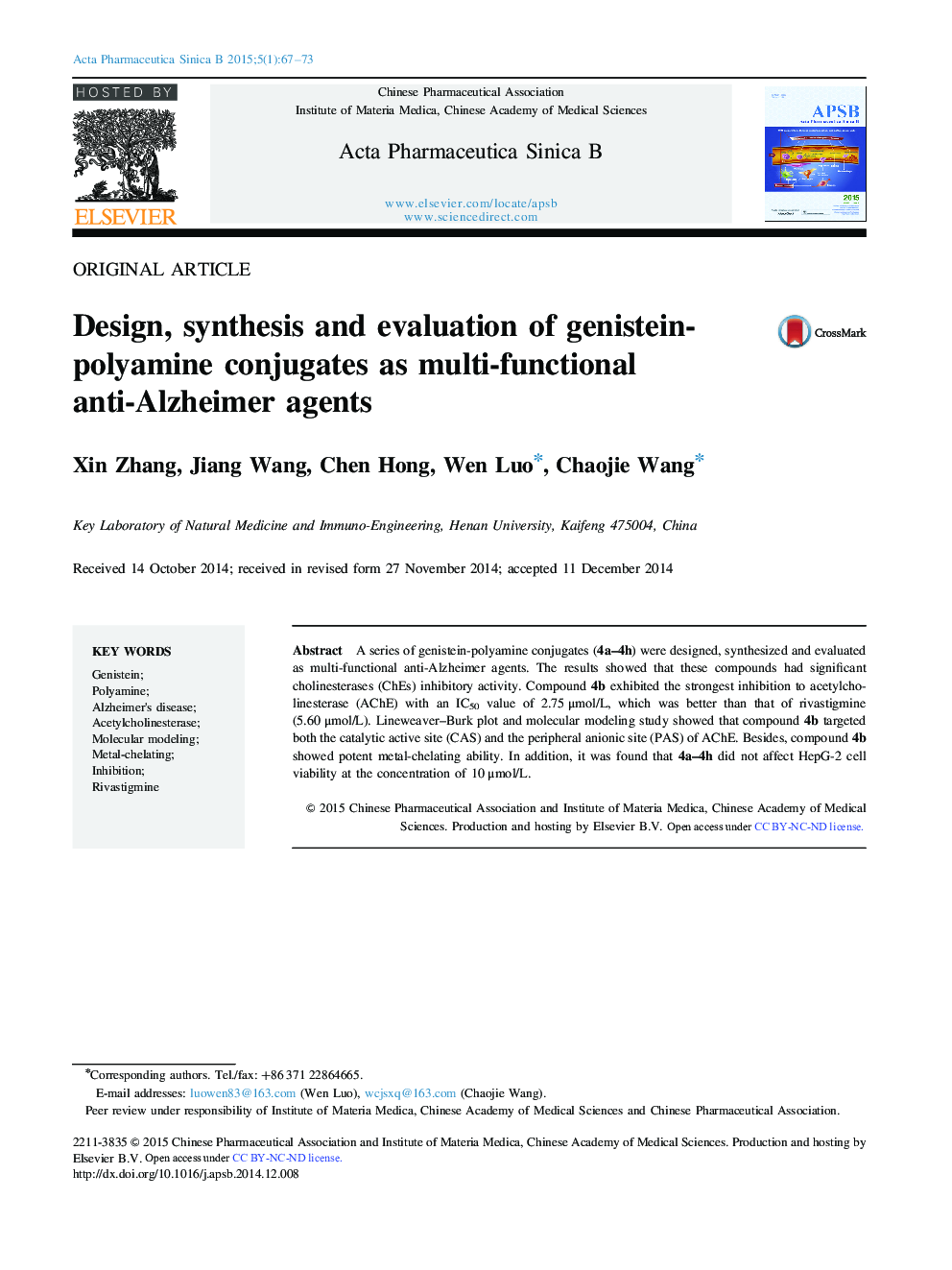| Article ID | Journal | Published Year | Pages | File Type |
|---|---|---|---|---|
| 2474751 | Acta Pharmaceutica Sinica B | 2015 | 7 Pages |
A series of genistein-polyamine conjugates (4a–4h) were designed, synthesized and evaluated as multi-functional anti-Alzheimer agents. The results showed that these compounds had significant cholinesterases (ChEs) inhibitory activity. Compound 4b exhibited the strongest inhibition to acetylcholinesterase (AChE) with an IC50 value of 2.75 μmol/L, which was better than that of rivastigmine (5.60 μmol/L). Lineweaver–Burk plot and molecular modeling study showed that compound 4b targeted both the catalytic active site (CAS) and the peripheral anionic site (PAS) of AChE. Besides, compound 4b showed potent metal-chelating ability. In addition, it was found that 4a–4h did not affect HepG-2 cell viability at the concentration of 10 μmol/L.
Graphical abstractEight genistein–polyamine conjugates were synthesized as anti-Alzheimer agents with cholinesterases inhibition activity and potent metal chelating ability, and they showed low cytotoxicity against HepG-2 cell at 10 μmol/L.Figure optionsDownload full-size imageDownload as PowerPoint slide
